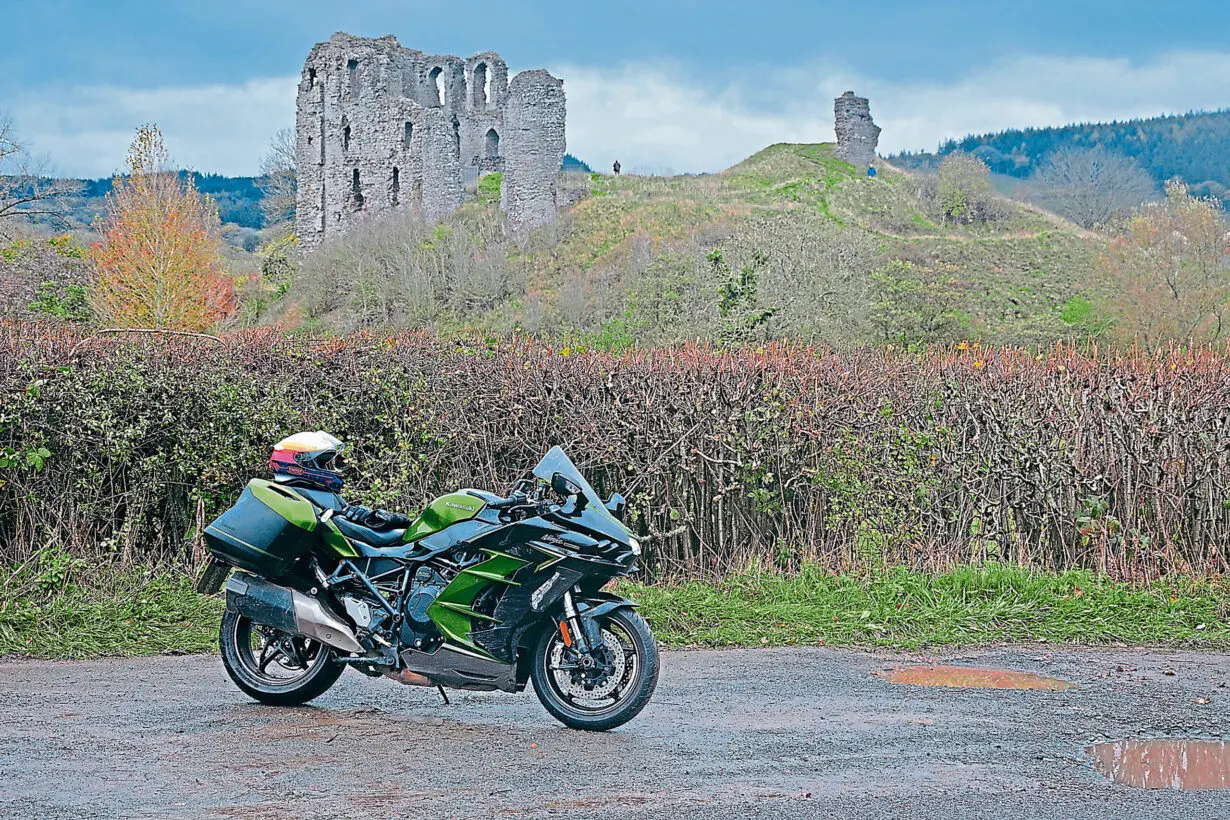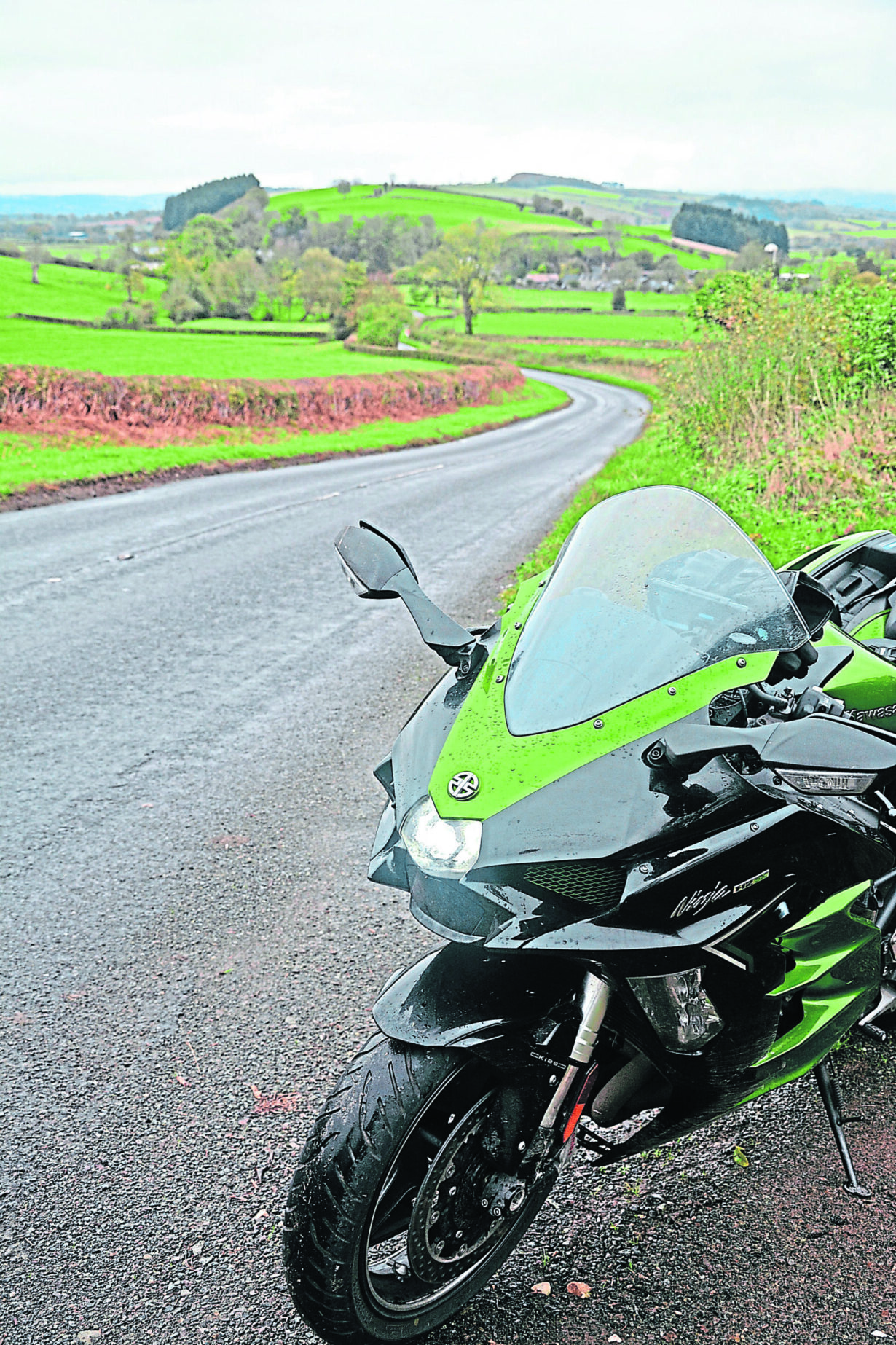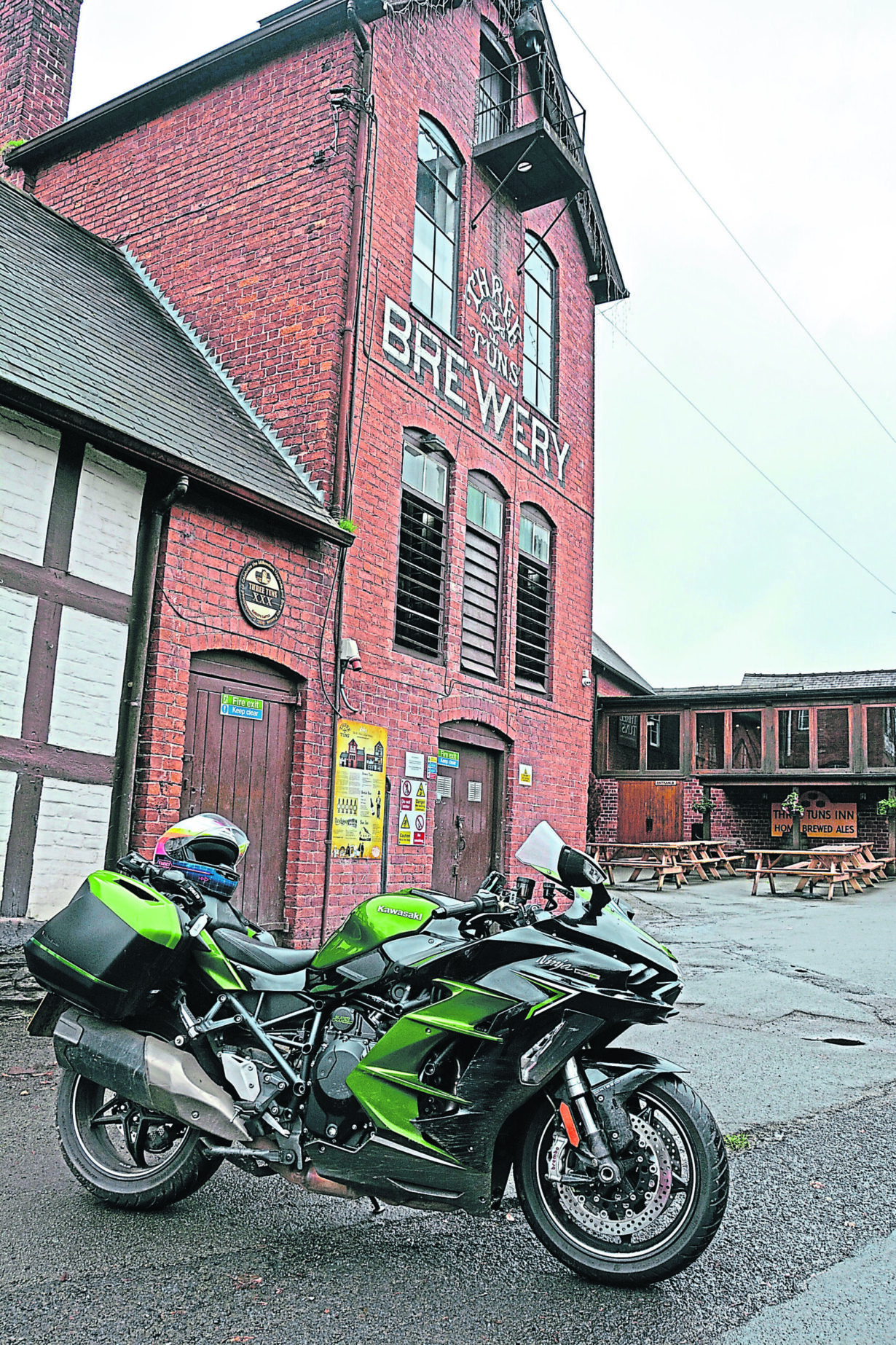A motorcycle is the perfect tool for exploring lesser-known roads, and border areas between countries are often the place to find those rarer routes. Dave Manning explores the Salop/Powys interface…
Many folk who find themselves heading in the general direction of Wales will tend to focus on getting to Snowdonia, or to the coast of Cardigan Bay, or to the Brecon Beacons – all areas that we’ve suggested as being ideal destinations for motorcyclists in the past, and with good reason.

But heading to the more commonly known areas can often mean that you miss out on other treats. The areas that lie between countries are often amongst the most interesting, for borderlands can have an atmosphere entirely of their own. Not only because of the distinctions between countries, and change in language, dialect and custom, but also because it is often the case that there’s a geographical reason why the border lies where it does. It’s often where the topography changes, or where rivers run, and those kinds of areas will inevitably result in some rather good roads to ride.
Enjoy everything MSL by reading the monthly magazine, Subscribe here.
Having already done one day ride in Wales recently, I headed from the end point on the coast across country to stay overnight with an old friend who lives in the border town of Knighton. This characterful little town, lying on the Welsh side of the border, also lies directly on Offa’s Dyke, the long-distance path running from the Severn Estuary, 177 miles northwards, to Liverpool Bay.

Essentially, Offa’s Dyke is now a long-distance path running along the border, although history tells us that it was originally an earthworks that involved a ditch (the ‘dyke’) dug on the Welsh side to create an eight-feet high earth ‘wall’, that ran along the boundary between Mercia and Powys. Initially, it was thought to have been created under the orders of Offa, the Anglo-Saxon king of Mercia between the years 757 and 796 AD. But recent research techniques have shown that at least some of the barrier was built as early as the fifth century, significantly earlier than Offa’s time.
While this ride wasn’t going to directly follow Offa’s Dyke, it was due to run parallel for a certain amount of time, straddling the border and running between Wales and Herefordshire and Shropshire on the English side.

To be honest, it matters not which road you choose to leave Knighton, as there are no bad roads around here. Some are smaller, others a little nadgery and gravel-strewn, but all are great to explore on two wheels. Your choice is simply down to whether you want to spend time getting lost around the lanes, or if you need to cover ground in a more efficient way.
I chose the A488, heading in a roughly northern direction through Clun and towards Bishop’s Castle, which is in itself a popular destination for motorcyclists through the summer, soon passing through the interestingly-named hamlet of New Invention, which would make for a vital stop and photo opportunity if you’re either on a new bike or, for the sake of irony, if you happen to be riding something particularly old…
Although it’s not far from our start point, the village of Clun is worth a stop. Not just to have a look at the castle, or for the fact that it’s a good place to have a look at the ditch and wall construction of Offa’s Dyke, as it can be clearly seen here. One of the reasons why I find Clun so attractive is that the Campaign for the Protection of Rural England suggests that Clun is one of the most tranquil locations in England, and they’re not wrong! It’s not always been that way though, as Clun Castle had a violent history, right up to the point where it was declared as ‘ruinous’ in 1539, after the area had been devastated by the self-titled Prince of Wales, Owain Glyn Dwr.

The road onwards is a roller-coaster joy through typically Shropshire countryside, mainly agricultural and never boring. Reaching Bishop’s Castle is a good excuse to stop for a brew – of either caffeine-fuelled hot beverage or of locally-brewed beer. There are a couple of great cafés here and, of course, the acclaimed Three Tuns Brewery at the top of the town. Having been first established in 1642, it’s remained on the same site and, as such, is the oldest licensed brewery site in Britain. And a bloody good pint, too. But not if you’re riding onwards, as I was. Although as a base to explore the area, it is nigh-on perfect.
Leaving Bishop’s Castle on the B4385 and heading north, away from the traffic using the A488, and cutting through some quiet and narrow lanes, I crossed the border into Wales once more and then headed through Pentre, before taking a right on to an unclassified road that cuts through to Church Stoke. With a following right-then-left over the A489 to carry on along Hall Bank and then Green Lane (and there’s an apt name!), I rode through Old Church Stoke and past Roundton Hill, the Montgomeryshire Wildlife Trust site known for Peregrine falcons and Wheatear (motorcyclists can be ornithologists, too, you know).
Roundton Hill provides some excellent views across the borderlands, and I followed the road onwards to the A488 before turning left after White Grit (another unusual place name, but probably quite descriptive of the local stone?) along some further unclassified lanes past Mitchell’s Fold stone circle, spotting another left turn, taking it and then finding myself heading on to the A490 at Chirbury.
A right turn northwards heads past Kingswood and further on to Coed-y-Dinas, with the mix of patently Welsh and English place names showing how the border lies, and how it has moved back and forth over time.
Now on the A483, the road is more open, faster, and not as interesting, although the scenery remains distinctly border-like, and it is a far quicker way to cover ground than using the unclassified lanes that I so like to explore. But time was pressing on, and I headed through Four Crosses, Llanymynech, Pant and Llynclys before joining the A5 west of Oswestry and thus back into England for the foreseeable future.






